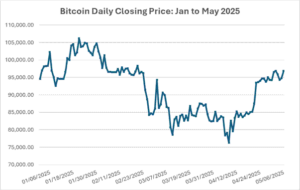Typically, U.S. stock markets tend to rise after a presidential election, though investors should be prepared for short-term volatility. Historical data since 1980 reveals that major U.S. indices generally see gains between Election Day and year-end in election years. However, this doesn't guarantee an immediate rally following Election Day.
Historical Performance of the Three Major Indices
Data shows that the three major indices—the S&P 500, the Dow Jones Industrial Average, and the Nasdaq Composite—often experience declines in the session and week following Election Day but recover within a month, sometimes even fully regaining losses. This indicates that investors shouldn’t expect an immediate post-election surge in the days that follow.
The S&P 500, for instance, has typically seen slight declines on the day after and the week following an election but tends to recover in the weeks ahead. In many election years, it achieves modest positive returns by year-end. For instance, both 2020 and 2016 witnessed strong post-election performances, although both years experienced short-term volatility.
The Dow has shown similar trends. In 2020 and 2016, the index posted substantial gains within the first week after the election, while years like 2012 and 2008 saw notable declines. This trend suggests that post-election market movement often involves volatility, which doesn’t always correlate directly with election outcomes.
The Nasdaq Composite, influenced heavily by technology stocks, has displayed even greater volatility. For example, the index faced significant post-election declines in 2000 and 2008 due to weaker economic conditions. However, it performed well in 2020 and 2016, reflecting strong growth in the tech sector.
Uncertainty Over Election Results and Market Sentiment
As the election draws to a close, the market’s attention shifts to how the election results might impact financial markets. Given that it can take days or even weeks to certify results, there may be lingering uncertainty around the final outcomes. The results of both the presidential election and key Congressional races, which determine control over the Senate and House, might still be pending.
This uncertainty could contribute to market volatility. In election years, investor sentiment often becomes highly sensitive, as policy expectations impact market performance. In 2024, the markets have had a particularly strong year, with an overall gain of around 20%—the best performance in the first 10 months of a presidential election year since 1936.
Historical Data as a Reference and Future Outlook
While stock markets generally trend upward after an election, historical data serves as a reminder that post-election performance is rarely straightforward. Short-term fluctuations are common, but markets tend to stabilize and achieve gains by the end of most election years.
In the weeks ahead, investors will closely monitor how election results influence policy changes, such as potential fiscal adjustments, tax policies, and impacts on specific sectors like technology and energy. Additionally, as the U.S. economy continues to recover from recent challenges, fundamental economic conditions and global geopolitical factors will also play roles in shaping medium- to long-term market movements.
In conclusion, although short-term volatility may affect the markets post-election, historical patterns suggest that stock markets usually return to an upward trajectory by year-end. During this period, investors should act cautiously, watching market trends closely to identify potential opportunities amid the fluctuations.





